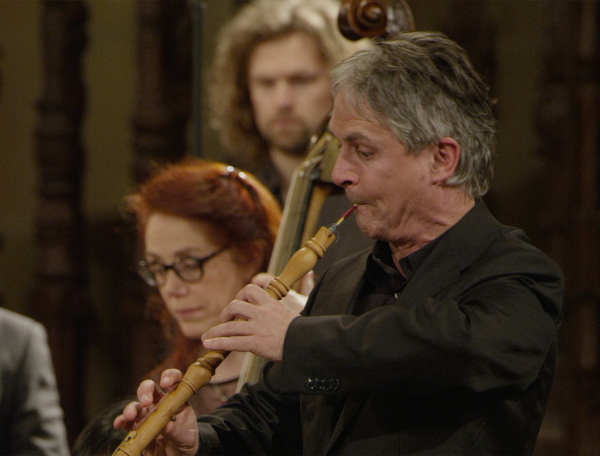

The Well-Tempered Clavier I No. 1 in C major
BWV 846 performed by Siebe Henstra
at home in Bussum, the Netherlands
Behind the music
A salute to his illustrious predecessors
Bach tried out this piece first on his eldest son Wilhelm Friedemann
The prelude is characterised by its wistful long series of arpeggios (broken chords). Bach composed the original, shorter version of this piece for his eldest son Wilhelm Friedemann, noting it down in the Clavierbüchlein that he compiled for his lessons from around 1720. In 1722, Bach included the definitive version in the manuscript of the Wohltemperirte Clavier. Wilhelm Friedemann, who was born in 1710, could therefore not have been older than twelve when this composition was given to him.
The prelude lays a dreamy foundation for the energetic fugue that follows, in which the theme in the four voices is introduced no fewer than 24 times - a number that may relate to the 24 keys Bach used as the main theme of this collection. And there is even more symbolism in this first prelude and fugue. The fugue theme is a reference to the l’homme armé, a melody from the Renaissance that many composers of the period used as the basis for their masses. So Bach’s opening number in the Well-Tempered Clavier could well be a salute to his illustrious predecessors.
Das Wohltemperirte Clavier, BWV 846-893
Composing 48 keyboard pieces in all 24 keys was the sort of challenge Bach enjoyed. In each of the two parts of the Wohltemperirte Clavier, he brought together the musical couple prelude and fugue 24 times; twelve in minor keys and twelve in major. In the preludes, he gave free rein to his imagination, and demonstrated mathematical tours de force in the fugues. In contrast to the iron discipline Bach had to apply to his church compositions, here he could abandon himself to intellectual Spielerei without worrying about deadlines.
The first part of the Wohltemperirte Clavier dates from 1722, although it contains some music that was written in the preceding five years. There is less clarity about the history of part two. Bach compiled this second manuscript only around 1740, although once again some of the preludes and fugues it contains date from a much earlier period. Bach described the target group for this collection of pieces as follows: ‘Zum Nutzen und Gebrauch der Lehr-begierigen Musicalischen Jugend, als auch dere in diesem studio schon habil seyenden besonderem ZeitVertreib’ (For both the education of the industrious musical youngster and the enjoyment of those well-versed in this material’).
- BWV
- 846
- Title
- Prelude and fugue in C major
- Epithet
- no. 1 from the Well-Tempered Clavier I
- Instrument
- harpsichord
- Genre
- harpsichord works
- Serie
- Das Wohltemperirte Clavier I
- Year
- 1722 or earlier
- City
- Cöthen (or Weimar?)
With support from
Prins Bernhard Cultuurfonds
Vocal texts
Original
Translation
Credits
-
- Release date
- 15 August 2014
-
- Recording date
- 13 September 2013
-
- Location
- Bussum
-
- Harpsichordist
- Siebe Henstra
-
- Harpsichord
- Titus Crijnen after Henri Hemsch, 1736
-
- Producer
- Frank van der Weij
-
- Film director
- Jan Van den Bossche
-
- Camera
- Joost Rietdijk
-
- Music recording
- Fokke van Saane
-
- Film editor
- Dylan Glyn Jones, Leonie Hoever
-
- Music editor
- Frank van der Weij
-
- Production assistant
- Zoë de Wilde
-
- With support from
- Prins Bernhard Cultuurfonds
Discover
Help us to complete All of Bach
There are still many recordings to be made before the whole of Bach’s oeuvre is online. And we can’t complete the task without the financial support of our patrons. Please help us to complete the musical heritage of Bach, by supporting us with a donation!

